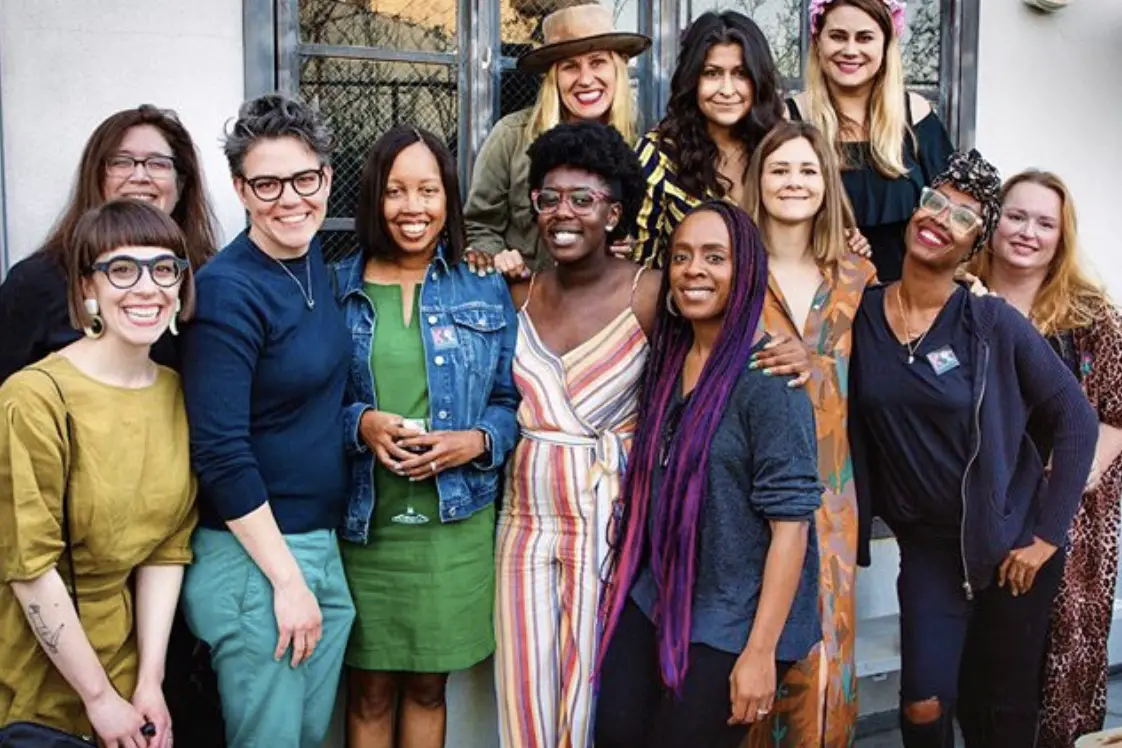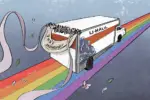Let’s play a game. Off the top of your head, how many playwrights can you name? How many of them are men? Whether you are currently studying for a theater degree or just had to read “The Crucible” in high school English, I can almost guarantee that a majority of who you can name are men, and probably straight and white to boot. The Kilroys are here to change that.
Back in January, I got to meet New York-based playwright Emma Goidel. I was stage-managing a production of her play, “The Gap,” and she came to talk with both the cast and wider campus about being an artist and playwright today. In addition to writing, Goidel is a member of the Kilroys, a group of female, trans and nonbinary (FTN) playwrights, directors and producers who are pushing theaters across the country to produce more work by FTN writers, especially writers of color.
It was the first time I’d heard of them, and also the first time I played the above game with myself. I thought about the casts of shows nominated for Tony Awards every year. Mostly men. I thought about who I considered to be important playwrights. Mostly men. I looked back on who wrote all the plays I’d read for school. Mostly men. I’d known, on some level, about how subpar the gender parity in theater is, just like in film and television, but I’d never realized just how far it trickled down.
I mean, Broadway didn’t have its first all-female creative team (book writer, composer and/or lyricist, choreographer and director) until “Waitress” in 2016, and it achieved its first all-female design team (scenic, lighting, sound, projection and costume design) on 2018’s “Lifespan of a Fact.” (Neither of which has happened again, by the way.) Female creatives — directors, playwrights, designers, dramaturgs, choreographers — exist out there, somewhere. So why aren’t they coming to Broadway?
Well, because they need to get produced at the regional level first. Producers are unlikely to back projects and people for Broadway who haven’t had strong showings elsewhere, so FTN playwrights submit to regional theaters looking for new work. If the lack of exposure keeps them from Broadway, what keeps them from regional theaters?
Whether they are for-profit or not, they need to make money. Shows are expensive to produce whether or not the actors are paid, and bigger theaters also boast larger staffs. The general public knows names like Shakespeare, Tennessee Williams and Rodgers and Hammerstein. They will come see their work. The work done by FTN playwrights can be seen as riskier just because there’s less chance of payoff, even with bigger female playwrights like Paula Vogel or Sarah Ruhl.
Here is where the Kilroys step in. The group is named after the World War II graffiti tag “Kilroy was here.” The phrase’s origins and the identity of Kilroy are debated, but the tag could have cropped up anywhere an Allied soldier was stationed; there are even stories of Hitler thinking Kilroy was an Allied spy and of Stalin finding “Kilroy” graffitied on a wall at the Potsdam Conference. The mythical figure could be anywhere.
By using the name, the Kilroys organization riffs on the fact that plays by FTN playwrights could be anywhere and are hiding in plain sight — so let’s get them on stage.
The organization publishes an annual list of the best unproduced or underproduced plays by FTN playwrights to highlight the great work that is out there.
Every year, surveys are sent out to the influential gatekeepers of play production: artistic directors, who decide what shows will be performed in a theater season; dramaturgs, the in-house researchers and editors who are often involved in play selection; literary managers, who oversee dramaturgs and/or read all the new play submissions and sort through them; actors; directors; fellow playwrights; and more.
Nominators are asked about the best plays they’ve read this year that fit the survey criteria — little to no professional productions being the key one.
From the surveys, Kilroys members like Goidel sort through the information, confirm play eligibility and then curate the list. The 2019 List is made up of the 33 plays receiving five to 19 nominations, the top 4%. The Kilroys also recognized 40 “Honorable Mentions,” which received four nominations each. The five previous lists are all available on their website, and two books have been published of monologues and scenes from shows on the previous lists.
The 2020 List, though, changes things up. Instead of looking at plays that haven’t made the list before, it honors the shows canceled or postponed due to COVID-19. The criteria were tweaked slightly. All shows still had to be full length (running 75 minutes or more) and to have a FTN playwright involved in its creation. But if, say, a musical had one male writer and one FTN writer, the work was still eligible. The production in question had to be either a first or second production and had to be either canceled, prematurely closed or postponed.
While that’s great, why look at these productions? The work of the traditionally produced list would still be valuable, right? The Kilroys explain on their “About The List” page, “It is our hope that this List will serve as a snapshot in time of this moment in the American Theatre, and that when we are allowed to gather once more as artists and audiences, the leadership of theatres large and small across the country will remember that audiences were primed and eager for risky, vital new plays by exciting and diverse voices.”
When theater eventually comes back, live and in person, it will be tempting to revert to the dependable productions of “Romeo and Juliet,” “A Streetcar Named Desire” and “The Sound of Music.” While their place in the theatrical canon cannot be disputed, theater is continuing to evolve just as the world is. A world coming out of a pandemic, reckoning with its racial past and figuring out where to go next, is a world primed for embracing the work of FTN playwrights.
The Kilroys’ annual lists are the starting point. Doing the work, in this case, means burying yourself in plays and finding the works that speak to you. I promise you’ll find them.

















